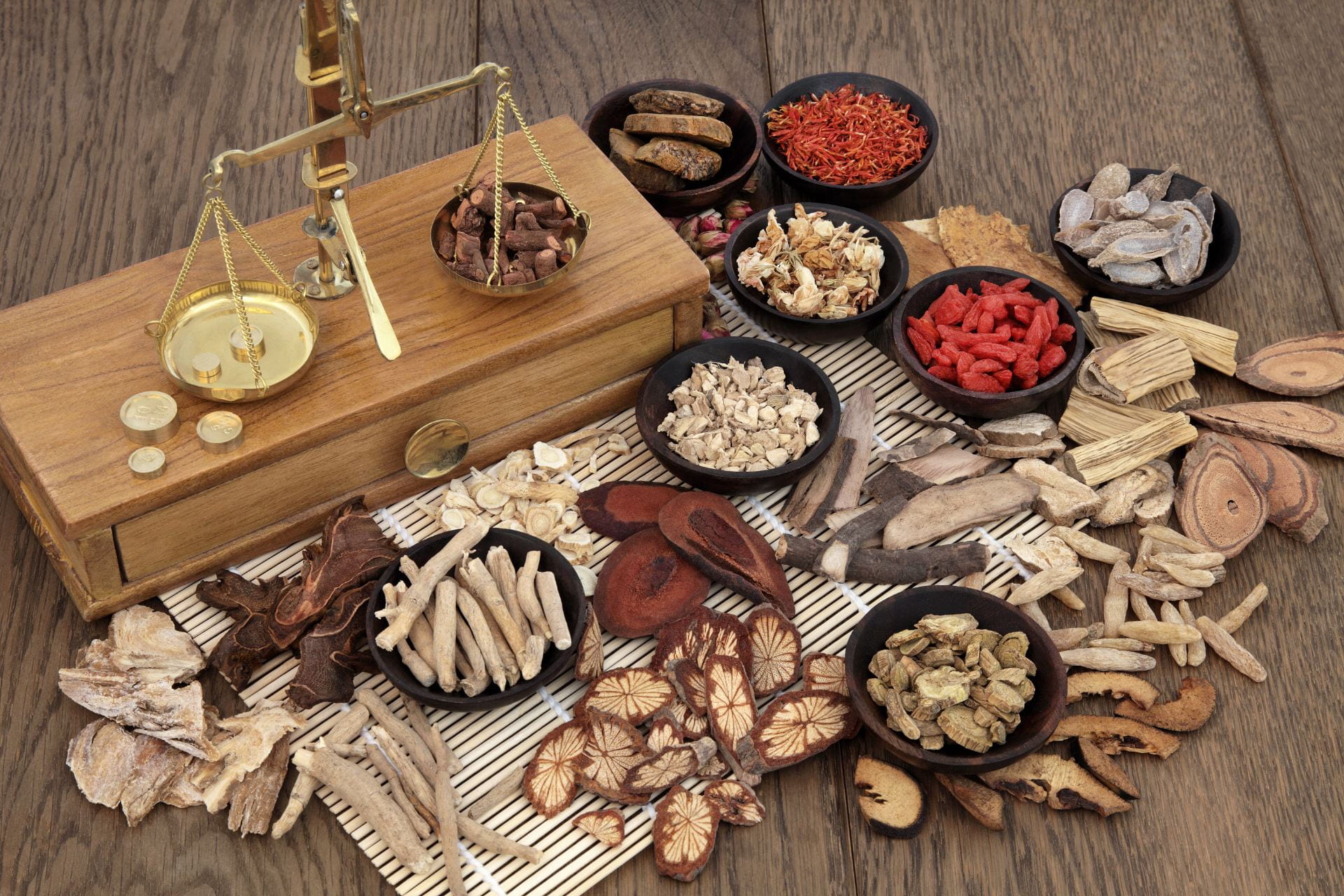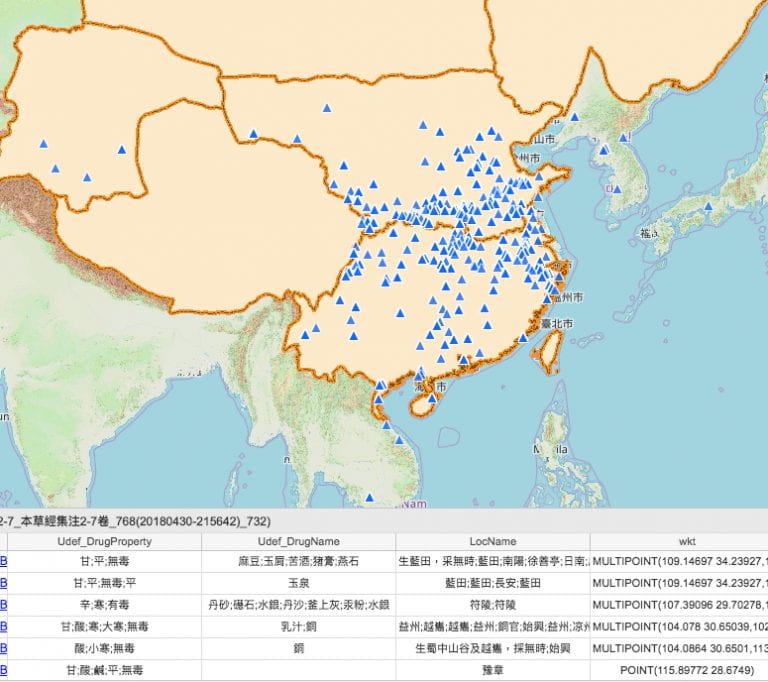New tools to study ancient drugs: At the crossroads of medicine, history and linguistics
Historian of Chinese medicine and religion Asst Prof Michael Stanley-Baker is tracking the use and geographic distribution of Chinese drugs over centuries.

Chinese medicinal substances have piqued the world’s imagination in recent years, making major inroads into the global health marketplace as traditional medicines and as inspiration for drugs such as Sildenafil (Viagra) and antimalarial artemisinin. The latter, discovered by Tu Youyou, led her to become the first Chinese woman to win a Nobel Prize.
Yet, the circulation of medicinals by traders, monks, travellers and healers across Eurasia has a long history that is hard to trace. Records by Buddhist and Daoist clergy in early imperial China have been treated as religious records, resulting in little attention being paid to their medical content. Much work remains to be done to trace these records and better understand how folk, lay, monastic and trained healers differed in their approaches to medicine.
Tracking drugs over centuries
To tackle this problem, I have been developing a set of tools and approaches for formatting, analysing and publishing primary source texts online, in collaboration with the Research Centre for Digital Humanities at the National Taiwan University and recently NTU’s Office of Information, Knowledge and Library Services.
The digital tools platform DocuSky was designed around the question of how to track materia medica (medical products derived from animals, plants and minerals) across different genres of texts—in particular, the digitised Buddhist and Daoist canons—as well as early medical literature.
DocuSky lets the user filter search results according to time, textual genre, sectarian divisions and production sites, the latter with the help of a geographic information system. Feeding the results into social network analysis software like Stanford University’s Palladio allowed visualisation of the distribution of over 12,000 drug terms across genres, time, sectarian divisions and geographic space.
 Figure 1: Comparison of drug terms usage between five Buddhist vinayas (larger clusters on the periphery of the centre and left) and the Chinese text “Recipes to keep close by” (largest cluster on the right). Dark grey dots represent the texts. Terms that are unique to one text cluster around it, while shared terms are indicated by lines connecting the dots. Graphic display made by Palladio.
Figure 1: Comparison of drug terms usage between five Buddhist vinayas (larger clusters on the periphery of the centre and left) and the Chinese text “Recipes to keep close by” (largest cluster on the right). Dark grey dots represent the texts. Terms that are unique to one text cluster around it, while shared terms are indicated by lines connecting the dots. Graphic display made by Palladio.
For example, Figure 1 shows a comparison of the use of drug vocabulary between five Buddhist monastic codes (vinaya in Sanskrit and lü 律 in Chinese)—which were translated into Chinese in the 5th century CE—and the 4th century Chinese text “Recipes to keep close by” (Zhouhou fang 肘後方, written by Ge Hong 葛洪, who lived from 283/284 to 343/365 CE). The rather low degree of overlap of drug vocabulary between the Buddhist vinayas and the Chinese recipe tradition indicates that the Indian and Chinese medical systems were largely separate in the 5th century.
Furthermore, although tradition claims that the five vinayas come from the word of the Buddha, the clusters of terms around them show that their drug vocabularies are largely different from each other and unique to each. This raises new questions: Do the differences in vocabulary stem from different regional drug practices of 3rd century BCE India, or are they the result of 5th century Chinese translation?
The digital tools we are developing enable us to see new patterns, and are extremely useful for understanding the historical interaction of medical traditions over time. In the future, they could also be used to analyse recipes and drug compounds for potential biomedical applications or for safety regulations by nations.
Geographic distribution of medieval Chinese drugs
The geo-locations of medicinal products described in a late 5th century work, “Annotated and collated materia medica” (Bencao jing jizhu 本草經集注), were mapped with the help of DocuSky’s DocuGIS tool (Figure 2). The map indicates that the Chinese drug trade at the time extended as far south as Funan and northeast into what are today Korea and Japan.
 Figure 2: Geo-locations of drugs described in “Annotated and collated materia medica”, circa 500 CE, displayed through DocuGIS. Users will be able to sort locations according to properties of herbs listed in the table.
Figure 2: Geo-locations of drugs described in “Annotated and collated materia medica”, circa 500 CE, displayed through DocuGIS. Users will be able to sort locations according to properties of herbs listed in the table.
I am currently working with scholars of Sanskrit, Arabic, Latin, Greek and Hebrew medicine to create a database of digitised, multi-lingual texts. Initially focusing on the Chinese language prototype, we are developing a vocabulary tracking system, called a synonymy, to trace drug terms across these languages. Grounded both in plant taxonomy and early philology, the system will enable us to find parallels and patterns across the texts and languages.
With the help of Singapore Botanic Gardens, we are synchronising our data with the Medicinal Plant Names Services at Kew Royal Botanic Gardens, and the Global Biodiversity Information Facility. The created foundation will enable studying the global circulation of early materia medica and may help to make the reservoir of global traditions accessible to biomedical research for a better integration of traditional medicines in modern healthcare. We are also in conversation with the World Health Organisation about potential applications of these tools for managing transregional traditional pharmacopoeias.
Author: Michael Stanley-Baker
A historian of Chinese medicine and religion with academic degrees in Chinese history as well as in traditional Chinese medicine, Asst Prof Michael Stanley-Baker holds joint appointments in NTU’s School of Humanities and Lee Kong Chian School of Medicine. He is Vice-President of the International Association for the Study of Traditional Asian Medicine, a multi-disciplinary society that spans disciplines in the humanities and medical sciences. He is also co-coordinator of the Digital Humanities Research Cluster in the School of Humanities.
More information on this project and related publications can be found here.
The article appeared first in NTU’s research & innovation magazine Pushing Frontiers (issue #15, June 2019).














/enri-thumbnails/careeropportunities1f0caf1c-a12d-479c-be7c-3c04e085c617.tmb-mega-menu.jpg?Culture=en&sfvrsn=d7261e3b_1)

/cradle-thumbnails/research-capabilities1516d0ba63aa44f0b4ee77a8c05263b2.tmb-mega-menu.jpg?Culture=en&sfvrsn=1bc94f8_1)

.tmb-listing.jpg?Culture=en&sfvrsn=6c7b6f1f_1)
.tmb-listing.jpg?Culture=en&sfvrsn=ab6472c8_1)
.tmb-listing.jpg?Culture=en&sfvrsn=332749b0_1)

.tmb-listing.jpg?Culture=en&sfvrsn=a0428bd8_1)
.tmb-listing.jpg?Culture=en&sfvrsn=c712bd4c_1)